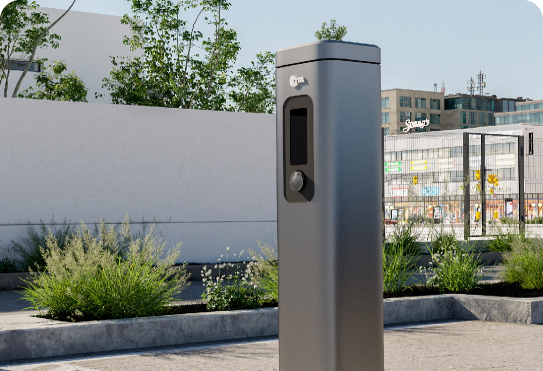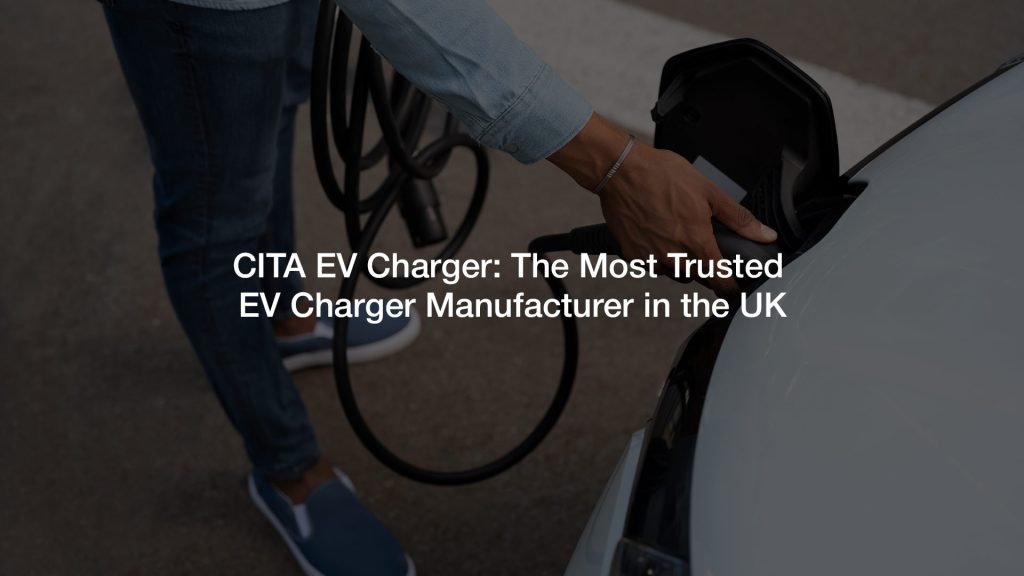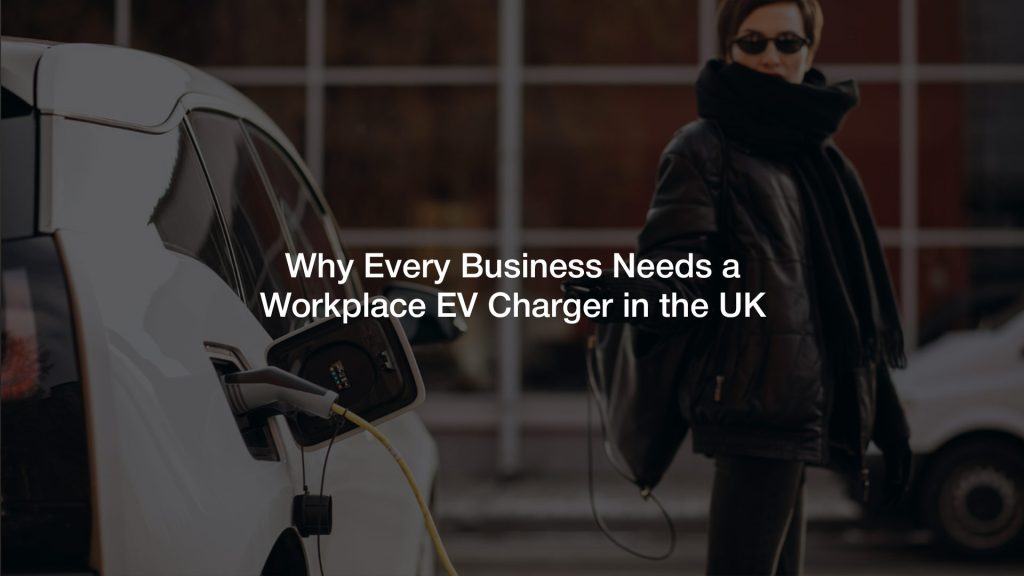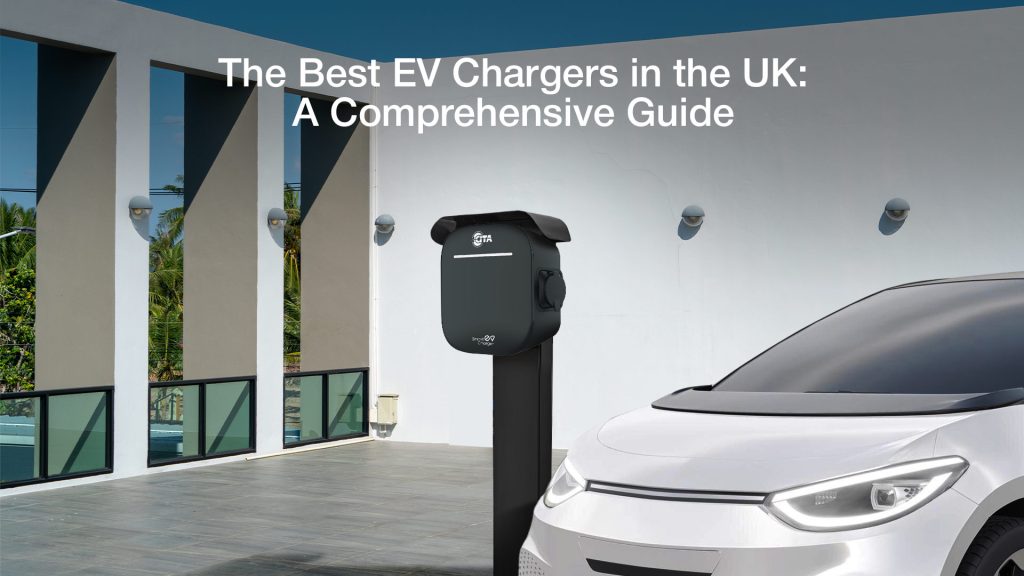As the UK accelerates towards a fully electrified future, Home EV Chargers have become an essential part of modern driving.
With the UK surpassing 1.1 million electric cars in 2025, and residential charging making up multiple EV charging sessions, 2026 buyers need reliable, certified, and future-ready information before installing a home EV charger.
This 2026 guide explains everything – from EV charger types and certifications to installation, costs, safety standards, and smart features – making it the only resource homeowners need before choosing the right electric car charger for their property.
Why Home EV Charging Matters in 2026
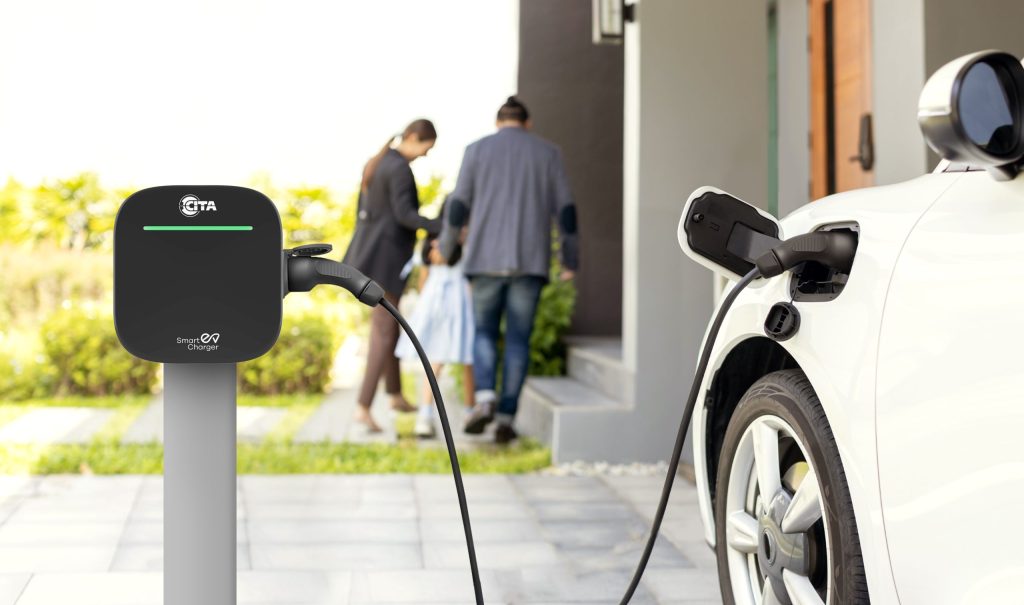
Home EV charging is becoming essential – not just convenient – as the UK moves deeper into mass electric vehicle adoption in 2026. With battery-electric vehicles already making up 22.4% of all new car registrations in 2025, and plug-in hybrids adding another 11%, more households than ever now rely on consistent, affordable access to charging. October 2025 alone saw plug-in cars reach 37.6% of the market, highlighting how quickly EV ownership is accelerating.
This rapid growth makes home EV charging even more important. According to Ofgem, smart time-of-use electricity tariffs have risen by over 75% in the past year, largely driven by EV-specific plans that reward overnight charging. Around 62% of UK home chargers already operate on these smart tariffs, allowing homeowners to charge their vehicles at significantly lower rates.
Since June 2022, regulations have also required every new home and workplace charger sold in the UK to include smart functionalities – helping drivers automatically charge when energy is cheapest and reducing strain on the grid.
Together, these trends explain why home EV charging matters in 2026: it gives drivers the most cost-effective, reliable, and grid-friendly way to charge as electric vehicle adoption continues to surge.
How AC Home EV Charging Works
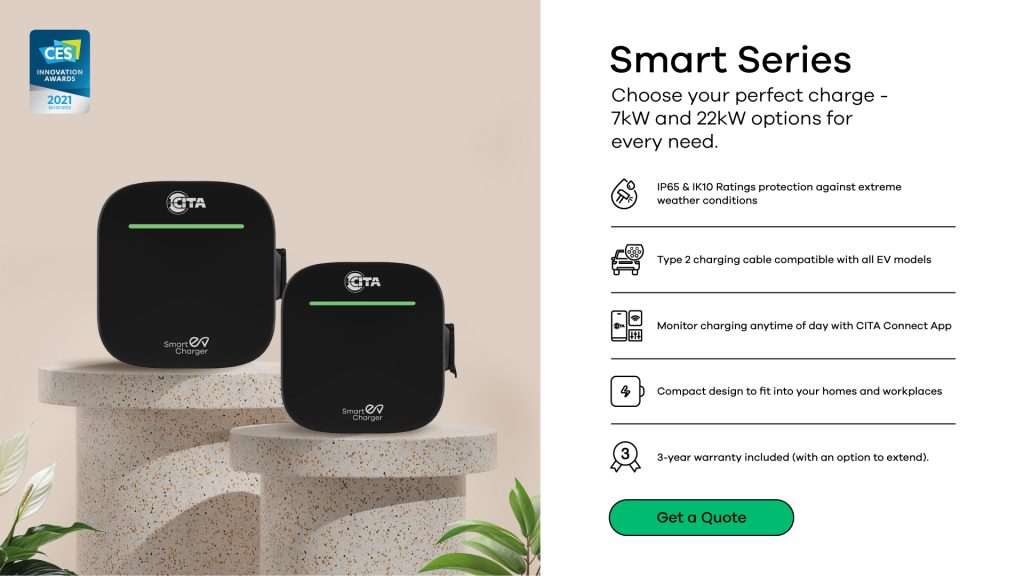
Most home EV chargers in the UK operate on AC power, typically offering 7 kW or 22 kW output depending on the property’s power supply.
7 kW AC EV Charger
Suitable for most UK households (single-phase supply)
Offers 20–30 miles of range per hour
Ideal for overnight charging
22 kW AC EV Charger
Requires three-phase supply (less common in typical homes)
Offers faster charging – up to 60–70 miles per hour
Preferred for high-capacity EVs or multi-car homes
Modern AC systems prioritise durability and safety. Many leading EV chargers are IP65 & IK10 rated, meaning they are dustproof, weather-resistant, and impact-protected – perfect for UK driveways, garages, and outdoor installations.
Key Features to Check Before Buying a Home EV Charger (2026 Edition)
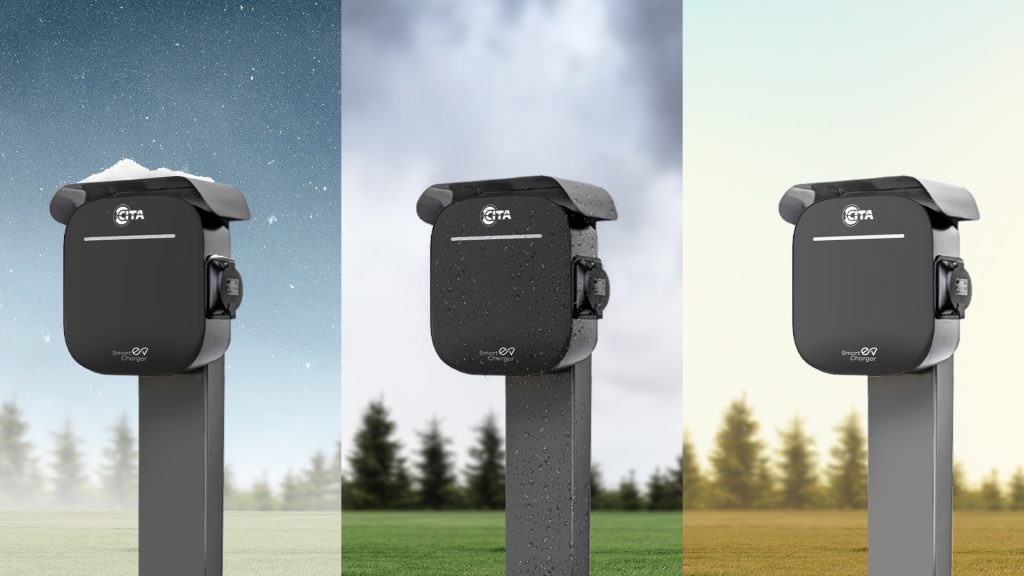
Before buying your home EV chargers in 2026, it’s crucial to focus on the features that shape convenience, safety, efficiency, and long-term value.
These elements ensure your charger remains future-ready as EV technology and UK regulations continue evolving.
1) Safety First: Certifications That Protect Your Home & EV
Safety certifications are one of the most reliable indicators of charger quality. Ensure your electric car charger is OZEV-approved, UKCA-certified, and aligned with the UK’s Smart EV Charge Regulations (mandatory since 2022).
These certifications safeguard your home’s electrical system, ensure grid-friendly performance, reduce operational risks, and guarantee that your charger is built to national safety standards for long-term reliability.
2) Smarter Charging, Smarter Savings: Features That Make Life Easier
Smart EV charging has become essential for UK households, especially as more drivers rely on off-peak energy tariffs. Look for features like scheduled charging, remote control, charging insights, load balancing, and tariff integration with plans like Octopus Go or OVO Charge Anytime.
Smart apps – including software similar to the CITA EV App – help you cut charging costs, monitor energy use, and manage your EV charging from anywhere.
3) Built to Last: Weatherproof Strength for the UK Climate
A reliable home EV charger must withstand the UK’s rain, frost, and fluctuating outdoor conditions. Prioritise EV chargers with an IP65 rating for water resistance, IK10 impact resistance, UV-stable materials, and robust temperature management.
These build-quality elements ensure year-round durability, stable charging performance, and minimal maintenance – whether your charger is installed in a driveway, garage, or exposed outdoor space.
4) Future-Proof Compatibility: Works With Every EV, Today and Tomorrow
Compatibility goes beyond plug standards. The right charger should support all major EV brands – Tesla, BMW, Mercedes, Hyundai, MG, Kia, and more – using the universal Type 2 connector.
It should also integrate smoothly with smart tariffs, solar setups, and home energy-management systems. This ensures effortless charging today while staying fully ready for any EV you may upgrade to in the future.
5) Peace of Mind Guaranteed: Strong Warranty & Reliable Support
A dependable residential EV charger supplier should offer a minimum 3-year warranty, extendable to 5 years for added assurance. Post-installation support – such as hardware servicing, troubleshooting, guided setup, and software updates – is equally critical.
Since many EV charging-related issues appear months after installation, strong after-sales support ensures uninterrupted performance, safety, and long-term satisfaction with your home charging system.
Where Should You Install a Home EV Charger?

Choosing the right installation spot for your home EV chargers can significantly influence charging convenience, long-term safety, and overall usability.
The placement should balance accessibility, efficiency, and protection – ensuring you get the most from your residential charging setup throughout 2026 and beyond.
1) Driveway Wall – The Most Convenient Everyday Choice
Installing your home EV charger on a driveway wall is one of the most practical options for UK homeowners.
It offers quick plug-in access, eliminates the need to enter the garage, and keeps the charger close to the parking space.
This location also allows easier cable management and reduces installation costs since driveway walls generally have shorter cable-routing distances to the main electrical supply.
2) Garage Wall – Perfect for Weather Protection & Security
A garage wall offers excellent protection from rain, frost, and accidental damage – ideal for maintaining long-term charger performance.
This location also prevents cable clutter outdoors and keeps your electric vehicle chargers completely secure.
If you frequently charge overnight or during extreme weather, installing the charger inside the garage ensures maximum safety and prolonged hardware life while keeping cables and connectors clean and dry.
3) Carport – A Balanced Outdoor-Indoor Option
A carport installation blends convenience with partial weather protection. Your charger remains shielded from direct rainfall, heat, and UV exposure, extending the life of the unit.
This option supports easy access while still offering the advantages of an outdoor setup.
Carports typically have enough height and structure to mount AC EV chargers safely without obstructing vehicle movement or cable reach.
4) Property Side Wall – Ideal for Clean Layouts & Hidden Installations
If your driveway or front space is limited, installing the charger on a side wall keeps the setup neat and discreet.
This option is especially useful for homes with narrow parking areas or side pathways.
It keeps cables organised, prevents visual clutter, and provides a more protected environment. Additionally, side walls often offer shorter routes to the consumer unit, reducing installation complexity and cost.
5) Dedicated EV Charging Pillar – Best for Multi-Car or Open Properties
A standalone EV charging pillar is perfect for homes with spacious driveways, multiple EVs, or flexible parking arrangements.
This installation option allows the charger to be positioned wherever it is most convenient – not restricted by wall placement.
Though slightly more expensive, charging pillars provide professional aesthetics, excellent accessibility, and allow for future expansion if you add more electric vehicles in the coming years.
Important Factors When Selecting Your EV Charger Location

Before finalising the installation spot for your home EV chargers, it’s important to evaluate a few technical and practical factors.
These considerations help ensure safety, cost efficiency, and long-term performance – making your charging setup both reliable and future-ready.
Distance From Power Supply: Shorter cable routing reduces installation costs and improves charging efficiency.
Weather Protection: Choose a location that minimises exposure to extreme conditions to extend the charger’s lifespan.
Security & Visibility: Install in a safe, visible location to avoid tampering or accidental damage.
Cable Management Convenience: Ensure cables reach the vehicle comfortably without crossing walkways or creating hazards.
Compliance With UK Wiring Regulations: Your installation must follow BS 7671 wiring regulations, RCD protection, and earthing requirements.
How to Choose the Best Home EV Chargers in 2026 – A Quick Checklist

Before investing in a home EV charger, it’s important to look beyond just the power rating or price. With the UK’s rapidly evolving residential EV ecosystem, 2026 buyers must consider safety, durability, compatibility, installation, and smart features.
This checklist breaks down every essential factor clearly.
1) Choose the Right EV Charger Power (7 kW or 22 kW)
Your power level determines how quickly your EV charges each day. Most UK homes run on single-phase supply, making 7 kW chargers the most common and practical option for overnight charging.
Homes with a three-phase supply can opt for 22 kW chargers, offering significantly faster charging for multiple EV households or vehicles with larger batteries. Pick based on your home’s supply, driving habits, and EV model.
2) Prioritise Proper Certification (OZEV and UKCA Approved)
Always ensure your EV charger meets UK compliance standards such as OZEV-approval and UKCA certification, which guarantee that the charger follows government-mandated safety, energy, and smart-charging regulations.
Certified EV chargers protect your home from electrical hazards, ensure grid-friendly behaviour, and comply with insurance requirements. Avoid uncertified units, as they may not meet UK wiring safety rules or smart regulations.
3) Check the Build Quality (IP65 and IK10 Rated Preferred)
Since UK weather varies from rain and frost to temperature drops, your home EV chargers must be physically durable. Look for IP65-rated units for water and dust protection and IK10 impact resistance, especially if the charger is installed outdoors.
A robust enclosure ensures longevity, prevents moisture damage, and supports long-term performance – reducing maintenance concerns over the years.
4) Look for Smart Charging Features That Add Real Value
A modern home EV charger in 2026 should include intelligent features such as smart scheduling, dynamic load balancing, tariff-based charging, remote access, and real-time consumption insights.
These features help you charge during cheaper off-peak hours, avoid overloading the household power supply, and manage energy more efficiently. A smart EV charger ensures convenience, savings, and full control via a mobile app.
5) Ensure Full Compatibility with Your EV and Home Setup
Your selected EV charger must work with all current and future EV models, especially those using the UK-standard Type 2 connector. Compatibility extends beyond the plug – the charger should support varying onboard charger capacities, smart tariff integrations, and home energy systems like solar or home batteries.
A future-ready charger prevents replacement costs when you upgrade your EV later.
6) Choose a Qualified, Experienced Installer
A safe installation is just as important as the EV charger itself. Always select an installer who is experienced, OZEV-authorized, and familiar with UK wiring regulations.
Skilled installers assess your property, recommend the correct earthing method, help with load management, and ensure compliance with safety standards. Proper installation prevents electrical risks and guarantees long-term reliability.
7) Look for Strong Warranty and Long-Term Support
A dependable warranty – typically 3 years or more – offers peace of mind and ensures access to repairs or replacements if needed. Some residential EV charger suppliers also offer extended protection, customer support, and dedicated software updates.
A strong warranty reflects the manufacturer’s confidence and ensures the EV charger continues to perform efficiently throughout its lifecycle.
Ready to Choose Your Home EV Charger in 2026?

If you’re planning to install a Home EV Charger in 2026, the CITA EV Charger can help you turn this guide into a tailored action plan.
As a growing home EV charger manufacturer in the UK, CITA offers IP65 & IK10 rated 7 kW and 22 kW AC EV chargers, paired with the intuitive CITA EV App, compact designs, installation guidance and 3-year (extendable) warranties.
From London and Manchester to Birmingham, Glasgow and beyond, we’re expanding support for homeowners nationwide.
Book a free consultation to find the right home EV chargers for your property and get your installation planned before demand peaks.





